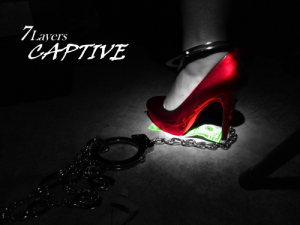Matt Mason (co-director of Historians Against Slavery) sent us this report about a recent anti-slavery event, wherein he was able to highlight the connections between past and present slaveries:
 On Saturday, October 10, 2015, the Kennedy Center in Washington, D.C. hosted an important and energizing event in the history of antislavery in the 21st century. Stacy Jewell Lewis, a survivor of 2 years’ worth of being trafficked as a sex slave, staged her powerful play, “7 Layers Captive,” to a packed hall that night. I represented Historians Against Slavery at this event and spoke to a VIP reception beforehand. HAS stalwart John Donoghue and his wife Laura, along with a variety of other anti-trafficking activists (such as friend of HAS Shamere McKenzie),were also in attendance. Some of them were more accustomed than John and I to being seated in the VIP section!
On Saturday, October 10, 2015, the Kennedy Center in Washington, D.C. hosted an important and energizing event in the history of antislavery in the 21st century. Stacy Jewell Lewis, a survivor of 2 years’ worth of being trafficked as a sex slave, staged her powerful play, “7 Layers Captive,” to a packed hall that night. I represented Historians Against Slavery at this event and spoke to a VIP reception beforehand. HAS stalwart John Donoghue and his wife Laura, along with a variety of other anti-trafficking activists (such as friend of HAS Shamere McKenzie),were also in attendance. Some of them were more accustomed than John and I to being seated in the VIP section!
At the reception, I emphasized how Stacy’s play falls in the grand abolitionist tradition of escaped slaves telling their own stories. She is the writer, director, producer, and star of the show, which along with the lack of some major sponsor allows her to keep control of how she tells her own story. There will be no repeat with Stacy of nineteenth-century white abolitionists trying to shape how former African-American slaves told their stories.
And how Stacy chose to tell her story that night illustrated perfectly how vitally both historians and other activists need to be informed and inspired by survivors’ voices. At the heart of the play’s narrative is an analysis of the psychological chains by which modern traffickers enslave their victims. It struck both me and John that historians studying past slavery and slave resistance could benefit enormously from contemplating how this process works today. And from this theme to its instructive illustrations of how greed drives sex trafficking and its forays into the history of madams, the play also has much to teach modern antislavery activists. The play as staged that night (Stacy adapts the performance to the venue and audience every time she performs it) ended with a surprise moment of spiritual redemption rather than physical freedom. So from beginning to end, audiences can learn and feel the dividends that come from a survivor telling her own story in her own way.
